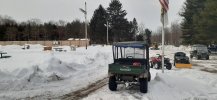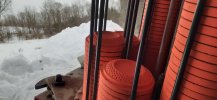Nathan the Machinist
KnifeMaker / Machinist / Evil Genius
Moderator
Knifemaker / Craftsman / Service Provider
- Joined
- Feb 13, 2007
- Messages
- 18,272
The BladeForums.com 2024 Traditional Knife is available! Price is $250 ea (shipped within CONUS).
Order here: https://www.bladeforums.com/help/2024-traditional/


I love it!
Exciting!!!
am I right in understanding that as an appleseed grind?
That bi-bevel looks interesting. I wonder how it would compare to normal flat grind with just one primary bevel.
More resistance penetrating a hard object with less binding. Optimized for wood working and bushcraft.
You will probably never see me do a scandi grind, but this is leaning away from a FFG towards the thin edge and robust primaries you see on bushcraft knives.
I'm trying to address the biggest shortcoming that I see with production Kepharts today, which is their tendency to look like the original without incorporating the design intent of the original. This is a natural consequence of people buying things based upon pictures on the internet without really grokking the geometry.
I could be completely off-base. But I don't think I am. I'm a geometry nerd and I've been mulling this over...
More resistance penetrating a hard object with less binding. Optimized for wood working and bushcraft.
You will probably never see me do a scandi grind, but this is leaning away from a FFG towards the thin edge and robust primaries you see on bushcraft knives.
I'm trying to address the biggest shortcoming that I see with production Kepharts today, which is their tendency to look like the original without incorporating the design intent of the original. This is a natural consequence of people buying things based upon pictures on the internet without really grokking the geometry.
I could be completely off-base. But I don't think I am. I'm a geometry nerd and I've been mulling this over...
View attachment 1509961
My happy place, glamping with my family at the beach.
Glamping = glamorous camping (RV)
This seems to be the biggest issue these days because our generation doesn’t have to use these types of tools like previous generations had to.I think that it might come down to an education component as to how geometry affects performance, probably because most people haven't been able to de-mystify the technical details and translate them into how a blade performs for a given task
San Elijo state beach. Not to many hippies here, thankfully.Where’s that at? Local? Torrey Pines State Beach? The free ocean front is what has always caused me the biggest inertia against moving out! No. Cal also has some heavenly state beaches but it’s also full of Birkenstock and Ugg wearing hippies
